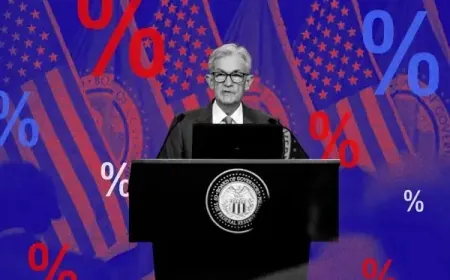Are AI Stocks Running Ahead of Reality? Should Investors Hold Extra Cash?
AI stocks jumped faster than company results, and many investors now keep more cash ready while they watch if tech profits match the pace of the market.

The stock market has jumped at a pace that surprised even veteran traders. A handful of mega-cap tech companies led most of the rise, riding the explosive interest in artificial intelligence. Those gains helped indexes break record after record. Now traders are asking whether the market climbed on solid ground or on hopes that may not hold up.
AI has changed the tone of Wall Street. Investors see new tools, faster computing power, and higher demand for advanced chips. That vision created huge confidence. During most of the year, tech earnings only added fuel to the fire. But when stocks cooled in mid-November, it exposed a deeper concern: the rally might rest on expectations that grew too quickly.
Financial planners across the country say they feel the tension. Their phones ring more than usual, and many calls come from people who fear a sudden drop. Some savers want to lock profits. Others want guidance before making big decisions with retirement funds.
Stocks are high because expectations are high
Indexes normally rise over long stretches, but this time the jump looks heavy. The gap between stock prices and actual earnings widened fast. A key long-term valuation gauge sits near levels seen right before the dot-com crash. That number does not predict the exact moment of a downturn, but it signals that stocks trade at rich levels.
Why does this matter?
Because when prices climb far above real profits, company performance must be nearly perfect to keep the rally alive. Any slowdown — slower AI adoption, weaker chip demand, or a drop in consumer spending — can spark a sell-off.
Tech giants carry the market on their shoulders
A small cluster of companies — the biggest names in chips, cloud, and software — powered most of the market’s rise. Their products sit at the center of the AI boom, so traders poured money into them.
That creates a narrow market. When a few stocks carry most of the growth, the entire index becomes vulnerable. If even one of these giants reports weak numbers or guidance, the impact spreads across the market.
This pattern mirrors earlier cycles when one sector dominated — telecom in the late ’90s, housing in the mid-2000s, and clean energy during smaller booms. When a story drives the market, disappointment hits harder.
Investors are quietly moving toward cash
While stocks grabbed headlines, the real shift happened in money market funds. Trillions now sit in short-term holdings. High yields, low risk, and market anxiety pulled investors toward cash at a pace rarely seen.
This shift shows that many people want safety without leaving the financial system. Cash yields offer comfort during uncertain times.
Yet financial planners warn that moving everything into cash rarely works. Markets often drop fast but recover even faster. History shows that rebounds pack huge gains into a few unpredictable days. Missing those days can shrink long-term returns.
Cash helps only when you use it with discipline
Keeping a cash reserve is not a defensive escape. It is a tool that works when you use it with intention.
Older savers need larger reserves so they can cover expenses without selling stocks during a downturn. Even a short dip can hurt retirement portfolios if withdrawals happen at the wrong time.
Younger investors hold a different advantage. They can keep a smaller reserve and use it during market drops. Buying strong stocks at cheaper levels builds long-term strength. Even if they cannot hold extra cash, raising monthly retirement contributions during a downturn captures lower prices automatically.
Think of cash not as a hiding place but as dry powder — something you hold so that you can act when others panic.
How the next few months could play out
The market entered a phase where every new data point matters. Traders study earnings calls, chip orders, cloud spending, and hiring trends with more focus than earlier in the year. AI remains at the center of that attention, but investors now want proof that companies can convert big promises into steady revenue.
If firms show slower demand or softer guidance, the mood can turn quickly. The recent pick-up in volatility reflects that tension. Strong quarterly results no longer guarantee smooth trading. Investors want confirmation that today’s high valuations match tomorrow’s cash flow, not just long-term hopes.
This tug-of-war between excitement and worry will shape the weeks ahead. Buyers still believe in the long runway of AI. Sellers worry that the market climbed too fast and gave too much credit to future growth.
What investors should focus on right now
Sharp reactions in the market will tempt many savers to overreact. That often leads to decisions driven by fear or hype — cutting exposure too early or jumping in with too much confidence.
Investors who handle this environment well usually follow a simple rhythm. They stay invested, keep their mix of stocks and cash steady, and add extra funds only when it fits their budget. They use cash as a tool, not an escape. They cut noise and rely on their long-term plan rather than headlines.
The goal is not to predict every swing. The goal is to stay in a position where market dips create openings instead of problems.
Also Read: Stocks Fall After Early Rally Despite Strong Nvidia Earnings and Solid Jobs Report





























































